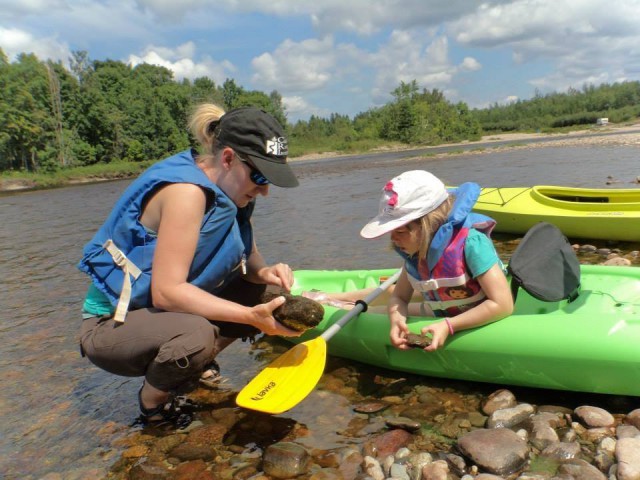I attended the Nashwaak Watershed Association AGM last night where Mr. Charles Murray gave a refreshingly candid presentation to the membership about his 2014 report on the Province’s Water Classification program and regulation. As the director of CCNB’s freshwater program and someone who has been advocating for our waters, particularly the enforcement of the Water Classification regulation, I couldn’t agree more with the Ombudsman’s message: It’s time to get this done.
The Water Classification Program and regulation was brought forth in 2002 – almost 14 years ago, as a progressive intention to set water quality standards in New Brunswick rivers and generate action plans to meet and enhance their protection. Of the 19 rivers submitted for classification, not a single one has been acknowledged and enforced by the regulation.
Mr. Murray offers that strong political will has been lacking on this file and that “a focused minister with a strong agenda can push through these kinds of barriers”.
We’ve met Minister Kenny and discussed the opportunity many times. He’s an avid fisherman and knows the cultural and economic value our waterways provide. He has an opportunity to move on years of stalling, to create a positive legacy as Minister of Environment.
Mr. Murray said it best: “He (Minister Kenny) has a tremendous opportunity. He has inherited an issue from various governments of different stripes. He’s not the author but he can be the solution. If he does anything in this field, brings in any sort of regulation that has any actual affect, he can say, ‘I’m the most effective Environment Minister this province has had in this millennium’. He can be the hero of this story if he takes it to task”.
Minister Kenny can write the next chapter in this long, frustrating drama. And it can have a happy ending for our waters. But it needs to happen soon. Mr. Murray explains: “There is a window for any new minister to take on the problems of the past, but after a while you start to take ownership of them, the danger is if the minister doesn’t advance the plan and does it soon, he’ll become another chapter in this story, another minister who was unable to move the file”.
Read the CBC Article and listen to Mr. can hear Mr. Murray give an interview about his presentation to CBC Information Morning:
About the Water Classification Program
The Water Classification Program and regulation was brought forth in 2002 as a progressive intention to set water quality standards in New Brunswick rivers and generate action plans to meet and enhance their protection.
The regulation, which is still in effect, allows for community-based organizations, financially supported by the Department of Environment, to collect water samples, analyze the quality of the water as A, B, and C (based on standards for drinking water, protection of aquatic life, further degradation of the water) and set goals for the maintenance or enhancement of that water quality. The goals are set by the watershed organizations with input from the wider watershed community and the Department of Environment. The classifications and goals were to be set in legal protection under the Clean Water Act and any development activity that would impact that water quality was to seek consultation with the community to downgrade the water quality. Otherwise, development projects would be required by law to respect the classification of the river system.
In its 2002 guide to the regulation the Department said the Water Classification Regulation establishes a “bottom line” management goal for the water quality of all classified waters in the Province.
When passed in 2002, the Department of Environment said the intent of the regulation was to “eventually classify all waters in the Province, watershed by watershed.”
Nineteen organizations representing 19 watersheds/river systems are directly impacted by the failure of this program and regulation, including:
Cap-Pelé area watersheds
Westerly watersheds of Caraquet Bay
Chaleur Bay Watersheds (Jacquet, Belledune, Nigadoo, Elmstree, Little Elmtree, and Millstream rivers, Armstrong, Duncan, Guitard, Fournier and Henry Brooks)
Bay of Fundy watersheds composite
Hammond River
Kennebecasis River
Kent County Watersheds (Chockpish, Bouctouche & Cocagne Rivers)
Kouchibouguac River and Black River Composite, Kouchibouguacis River
Madawaska River
Meduxnekeag River
Miramichi River
Nashwaak River
Petitcodiac River and Memramcook River
Pokemouche River
Richibucto River
Shediac and Scoudouc Rivers
St. Croix River
Tabusintac River
Big and Little Tracadie Rivers


